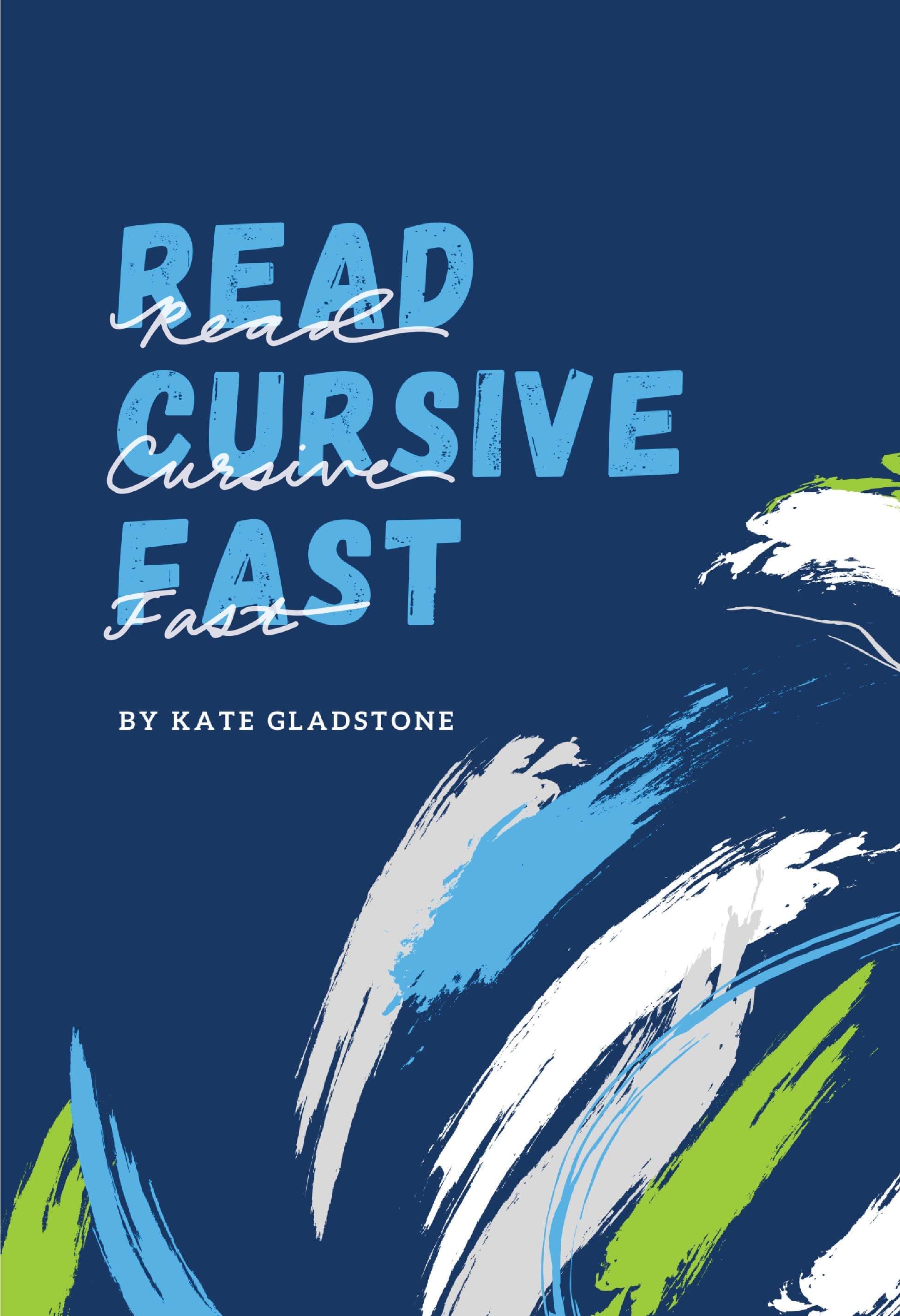Many people are not good at writing in cursive, but they have no trouble reading it when it is shown to them. Others cannot even make out anything written in cursive. This can be a practical problem, whether it is a question of reading a grocery list, a love note or a wedding invitation. When investigating old records for genealogical purposes or delving into historical primary sources, it is imperative that one can read cursive. But can you learn to read cursive if you cannot write it? This is the mission of Kate Gladstone’s new book: Read Cursive Fast.
Only 139 pages long, this short book is a handy textbook on decoding cursive. By the time the reader is done with all the exercises, the secrets of cursive become clear and obvious.
For a discussion about the book, watch the video above.
Using a method of teaching that is gradual and painless, author Kate Gladstone guides the reader through letter recognition, to texts that become progressively more difficult to read, to fluency in cursive reading.
I highly recommend this book to homeschoolers, college students or anyone who wants to investigate the past. I was lucky enough to get an advance copy. But the book will be available soon, and can be pre-ordered here: http://readcursivefast.com/order


In the first place, cursive is undeniably much faster. “Kate Gladstone, a handwriting specialist based in Albany, estimates that while a student needs to jot down 100 legible words a minute to follow a typical lecture, someone using print can manage only 30” (Freedman, 2005). Other benefits from teaching cursive include the ability to read cursive. The Declaration of Independence and many other important archival documents are written in cursive. A cursive signature is more difficult to forge than a printed one.
Thanks for raising these matters.
/1/
The New York Times SERIOUSLY misquoted me. I said “LETTERS per minute,” not “words per minute,” there — the reporter took it down as “words” — and when the story ran, and I phoned the TIMES to ask for them to print a correction (as they sometimes still bother to do), they said they didn’t want to bother “because an error of one word is a minor error.”
Similarly, a colleague (now deceased) who was also interviewed for the same story, was also misquoted at some point (to a lesser extent) — she similarly contacted the TIMES and was similarly told that the staff considered the error too small to really matter.
In both cases, she and I were each additionally told (when we questioned the notion that an error of content could be “too small” to rectify) that the editor and the reporter had wished and expected the story to support cursive overall, and that we had been difficult interviewees because (as was indeed the case) we had refused to give the expected pro-cursive answers to questions which the reporter had asked of each of us. (For instance — as we each recalled, and as the above “explanation” also mentioned — the reporter had tried very hard to get each of us to answer “Cursive, because it joins all letters’ to his opening question of “Which handwriting style do you advocate as the best?”, and his other questions had also been written [before the interview] on the assumption that we would be favoring cursive above all else. So, as the matter was put to us, we had made his life hard by going off-script — by not giving the answers he’d expected from us, to fit his pre-written questions — and the TIMES was not inclined to do us any favors as a result.)
/2/
The ability to read cursive, which you rightly recognize as important, can be gained by other means than through learning to write cursive. Learning to read cursive can be accomplished in a few days or weeks, depending on the student. Learning to write cursive takes much more time, much more effort, and (where school curricula are concerned) much more expense in the form of printed materials and supplies.
/3/
Although many people still believe or assume that “a curse I’d signature is more difficult to forge than a printed one,” the researches and experiences of most questioned document examiners (the experts in identifying forgeries) establish that the signatures which are most difficult to forge are the most strikingly simple and legible signatures: including the printed ones. A forger has a far easier time effectively simulating a cursive signature than a printed one (partly because so many cursive signatures are ungoverned scribbles), so forgers often take this fact into account when deciding whom to victimize.